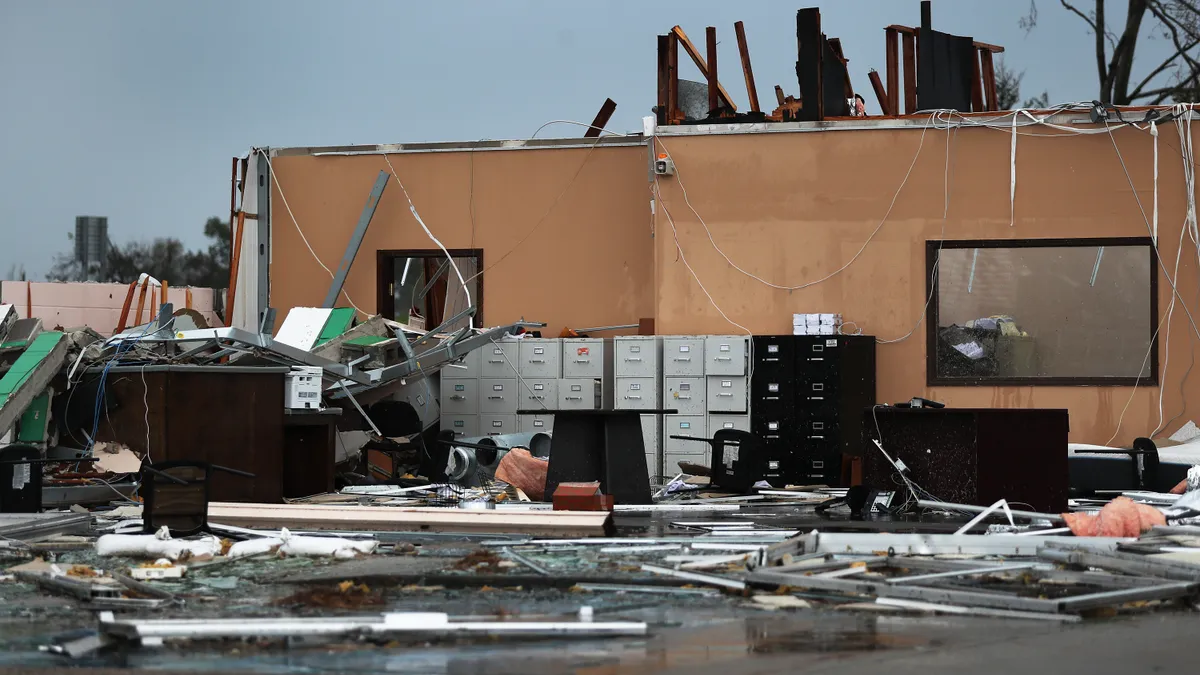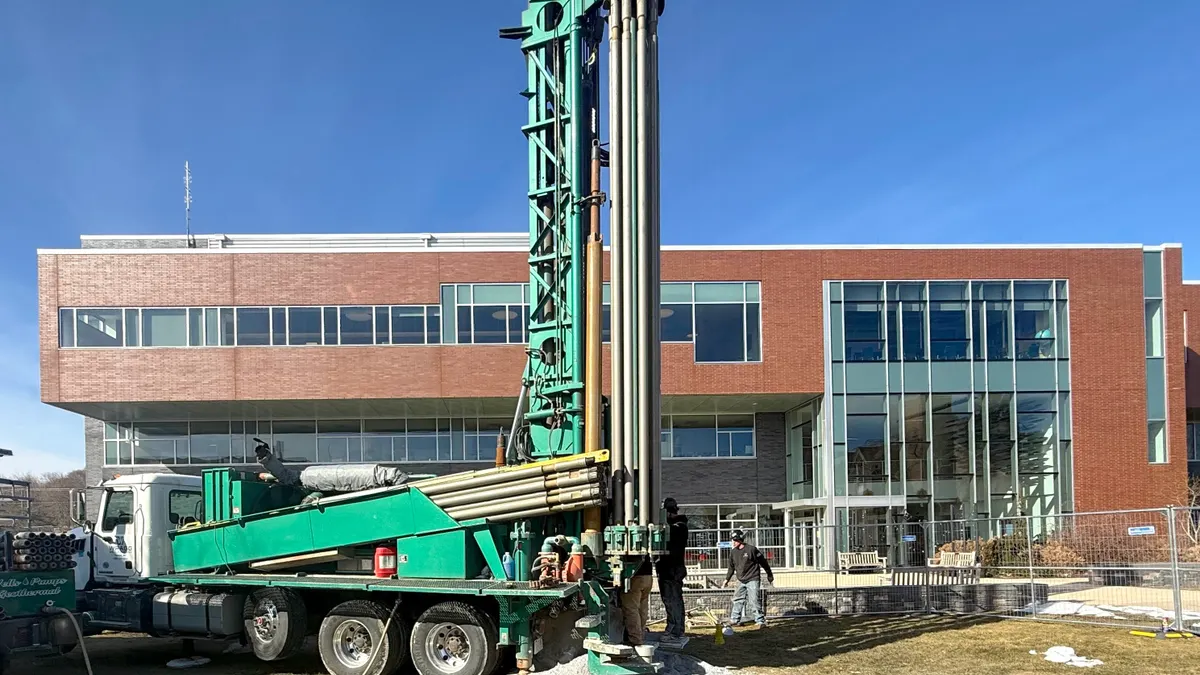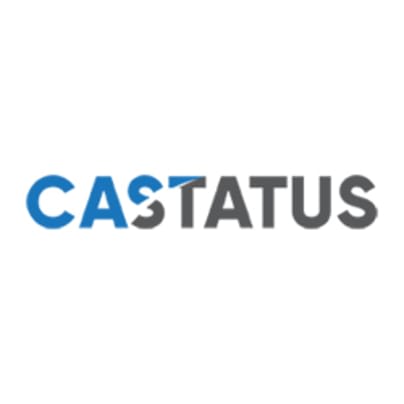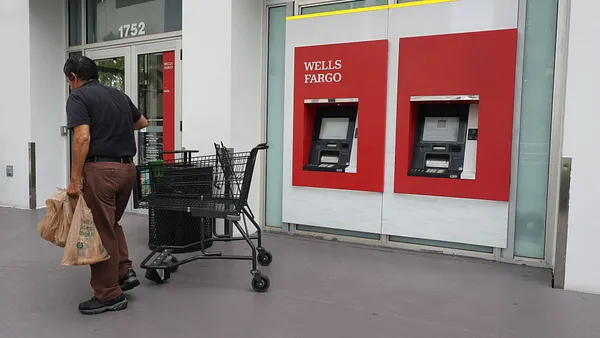Dive Brief:
- Insurance costs are expected to continue increasing in response to the rise in extreme weather events and the risks associated with operating commercial buildings in vulnerable areas, according to an analysis from Deloitte.
- The average monthly cost of insurance for a commercial building in the U.S. could jump nearly 80% from $2,726 in 2023 to $4,890 by 2030, at a compound annual growth rate of 8.7%, according to projections from the Deloitte Center for Financial Services. For states with the greatest extreme weather risk, costs could almost double, from $3,077 to $6,062 per building per month at a CAGR of 10.2%.
- Average insurance costs for commercial properties have nearly doubled from 2013 through 2023, and are set to continue rising, as insurers play “catch-up from increased losses in recent years,” Deloitte says in its report. In order to mitigate these costs, the consulting firm recommends that owners conduct regular risk assessments, discuss policy renewal options in advance of deadlines, explore self-insurance and consider relocating some or all of their properties.
Dive Insight:
Setting records, there were 28 separate billion-dollar extreme weather events in 2023, with estimated recovery costs totaling $92.9 billion, according to Deloitte. The events included 19 severe storm events, four flood events, two tropical cyclones and one each of winter storm, cold wave, drought and heat wave events. Overall, they represented a 56% increase from 2022, up 180% from levels seen 10 years ago, Deloitte reported.
Deloitte developed its insurance cost forecasts using comparable historic compound growth rates from 23 years of available property insurance expense data from commercial properties within the National Council of Real Estate Investment Fiduciaries, alongside 20 years of data on historic growth patterns for billion-dollar extreme weather events from the National Oceanic and Atmospheric Administration National Centers for Environmental Information.
Commercial buildings in 10 states with the highest expected annual loss totals from natural hazards identified by the Federal Emergency Management Agency have seen a 31% increase in insurance costs year over year, compared with 25% for states outside of the top 10. High-risk states have also seen a 108% increase in insurance costs over levels from five years ago, compared with 96% for lower-risk states, the analysis says.
By 2030, the cost premium of being in a high-risk, extreme weather state could be 24% greater than the national average, compared with a 32.5% discount in lower-risk states, according to the report. Thus, relocating some or all properties, in certain circumstances, can help reduce risk exposure to extreme weather or provide property owners with access to insurers who no longer service certain regions in the U.S., Deloitte says.
When making relocation decisions, owners should ensure that they or their insurer use the most updated peril risk maps, the report notes. Deloitte cites examples of government agencies increasingly relying on satellite imaging and AI technology to map risk zones more dynamically, due to climate and environmental changes that are causing historical wildfire risk maps to become obsolete.
Deloitte also suggests that commercial real estate owners explore self-insurance. By setting up a captive insurance company, owners can boost their own purchasing power and gain direct access to the reinsurance and alternative capital markets, its report says. This approach could soften the impact of volatility “from both a price and availability perspective through traditional insurance channels,” Deloitte says in the report.
Before considering these options, however, owners should conduct regular risk assessments, or for those that already do, should increase the frequency of these assessments, Deloitte says. Such prevention measures could help inform decision-making and keep pace with the rise in weather-related events, according to the report. Commercial real estate owners can also focus on strengthening security and monitoring measures, such as cameras, access control, flood monitors and fire prevention tools, per the report.
Additionally, Deloitte emphasized that brokers and advisors can play a key role in helping commercial real estate owners anticipate risk and reduce costs. These professional service providers can find cost savings opportunities or more competitive pricing, Deloitte says, due to many having negotiating power with insurers. “Brokers and advisors can also avail owners of any resiliency efforts and discount programs insurers may offer,” its report says.













